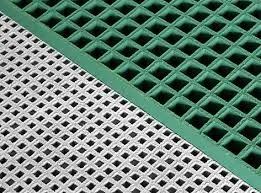
-
 Afrikaans
Afrikaans -
 Albanian
Albanian -
 Amharic
Amharic -
 Arabic
Arabic -
 Armenian
Armenian -
 Azerbaijani
Azerbaijani -
 Basque
Basque -
 Belarusian
Belarusian -
 Bengali
Bengali -
 Bosnian
Bosnian -
 Bulgarian
Bulgarian -
 Catalan
Catalan -
 Cebuano
Cebuano -
 China
China -
 China (Taiwan)
China (Taiwan) -
 Corsican
Corsican -
 Croatian
Croatian -
 Czech
Czech -
 Danish
Danish -
 Dutch
Dutch -
 English
English -
 Esperanto
Esperanto -
 Estonian
Estonian -
 Finnish
Finnish -
 French
French -
 Frisian
Frisian -
 Galician
Galician -
 Georgian
Georgian -
 German
German -
 Greek
Greek -
 Gujarati
Gujarati -
 Haitian Creole
Haitian Creole -
 hausa
hausa -
 hawaiian
hawaiian -
 Hebrew
Hebrew -
 Hindi
Hindi -
 Miao
Miao -
 Hungarian
Hungarian -
 Icelandic
Icelandic -
 igbo
igbo -
 Indonesian
Indonesian -
 irish
irish -
 Italian
Italian -
 Japanese
Japanese -
 Javanese
Javanese -
 Kannada
Kannada -
 kazakh
kazakh -
 Khmer
Khmer -
 Rwandese
Rwandese -
 Korean
Korean -
 Kurdish
Kurdish -
 Kyrgyz
Kyrgyz -
 Lao
Lao -
 Latin
Latin -
 Latvian
Latvian -
 Lithuanian
Lithuanian -
 Luxembourgish
Luxembourgish -
 Macedonian
Macedonian -
 Malgashi
Malgashi -
 Malay
Malay -
 Malayalam
Malayalam -
 Maltese
Maltese -
 Maori
Maori -
 Marathi
Marathi -
 Mongolian
Mongolian -
 Myanmar
Myanmar -
 Nepali
Nepali -
 Norwegian
Norwegian -
 Norwegian
Norwegian -
 Occitan
Occitan -
 Pashto
Pashto -
 Persian
Persian -
 Polish
Polish -
 Portuguese
Portuguese -
 Punjabi
Punjabi -
 Romanian
Romanian -
 Russian
Russian -
 Samoan
Samoan -
 Scottish Gaelic
Scottish Gaelic -
 Serbian
Serbian -
 Sesotho
Sesotho -
 Shona
Shona -
 Sindhi
Sindhi -
 Sinhala
Sinhala -
 Slovak
Slovak -
 Slovenian
Slovenian -
 Somali
Somali -
 Spanish
Spanish -
 Sundanese
Sundanese -
 Swahili
Swahili -
 Swedish
Swedish -
 Tagalog
Tagalog -
 Tajik
Tajik -
 Tamil
Tamil -
 Tatar
Tatar -
 Telugu
Telugu -
 Thai
Thai -
 Turkish
Turkish -
 Turkmen
Turkmen -
 Ukrainian
Ukrainian -
 Urdu
Urdu -
 Uighur
Uighur -
 Uzbek
Uzbek -
 Vietnamese
Vietnamese -
 Welsh
Welsh -
 Bantu
Bantu -
 Yiddish
Yiddish -
 Yoruba
Yoruba -
 Zulu
Zulu
Exploring the Features and Benefits of FRP Stack Technology
Exploring FRP Stacks A Comprehensive Guide to Fiber-Reinforced Polymer Technologies
In the ever-evolving landscape of materials science, Fiber-Reinforced Polymer (FRP) stacks have emerged as a pivotal innovation, revolutionizing various industries by offering lightweight, durable, and corrosion-resistant solutions. This article delves into the nature, applications, and future prospects of FRP stacks, highlighting their significance in modern engineering and construction.
What are FRP Stacks?
FRP stacks are advanced composite materials made of polymer matrices reinforced with fibers. These fibers are typically composed of glass, carbon, or aramid, providing enhanced mechanical properties and structural integrity. The combination of these materials results in a composite that exhibits superior strength-to-weight ratios compared to traditional materials, such as steel and concrete. This unique characteristic makes FRP stacks an attractive option for a multitude of applications.
Key Advantages of FRP Stacks
1. Lightweight One of the most significant advantages of FRP stacks is their lightweight nature. This feature allows for easier handling and transportation, ultimately reducing installation costs and labor efforts.
2. Corrosion Resistance FRP materials are inherently resistant to chemical corrosion, making them ideal for applications in harsh environments, such as chemical plants, marine applications, and wastewater treatment facilities.
3. Durability FRP stacks offer exceptional durability and longevity, often outperforming traditional materials in terms of lifecycle costs due to reduced maintenance needs.
4. Design Flexibility The manufacturing process of FRP allows for intricate designs and customized shapes, enabling engineers to create components that meet specific requirements while maintaining performance standards.
5. Thermal Insulation FRP stacks possess low thermal conductivity, which helps in reducing thermal losses in different applications, making them energy-efficient.
Applications of FRP Stacks
frp stack

The versatility of FRP stacks means they find applications across various fields, including
- Construction and Infrastructure FRP stacks are increasingly used in bridges, buildings, and marine structures due to their lightweight and corrosion-resistant properties. They help in extending the life of infrastructure, especially in coastal and industrial areas where exposure to harsh environmental conditions is common.
- Transportation In the transportation sector, FRP materials are utilized in vehicles, railways, and aerospace applications. The reduction in weight leads to improved fuel efficiency and overall performance.
- Energy Sector Wind turbines often utilize FRP stacks in their blades to enhance strength and reduce weight. Additionally, the renewable energy sector is increasingly adopting FRP materials for solar panel frames and structures.
- Telecommunications FRP stacks are also used in the construction of communication towers and satellites, where their lightweight properties contribute to better signal transmission and reduced structural loads.
Future Trends
The future of FRP stacks is promising, with ongoing research and development aimed at improving their properties and applications. Innovations in nanotechnology and hybrid composites are set to enhance the mechanical performance of FRP materials, leading to even greater adoption across industries.
Moreover, as sustainability becomes a paramount concern, the development of bio-based resins and recyclable fibers is gaining traction in the FRP sector. This shift toward eco-friendly alternatives will not only reduce the environmental impact of FRP production but also appeal to an increasingly environmentally conscious market.
Conclusion
In conclusion, FRP stacks represent a significant advancement in material science, providing unparalleled advantages in terms of strength, weight, and corrosion resistance. Their diverse applications and continued evolution position them as a cornerstone of modern engineering and construction. As industries strive for innovation and sustainability, the role of FRP stacks is likely to expand, making them an essential component in the future of materials technology. Embracing these advancements will not only enhance performance but also contribute to a more sustainable and efficient world. With the potential for further innovation on the horizon, the journey of FRP stacks is just beginning.









